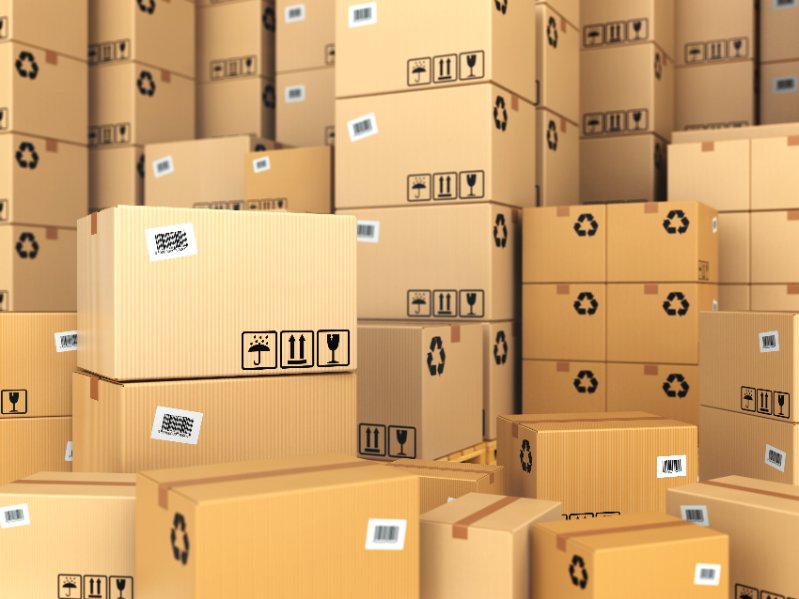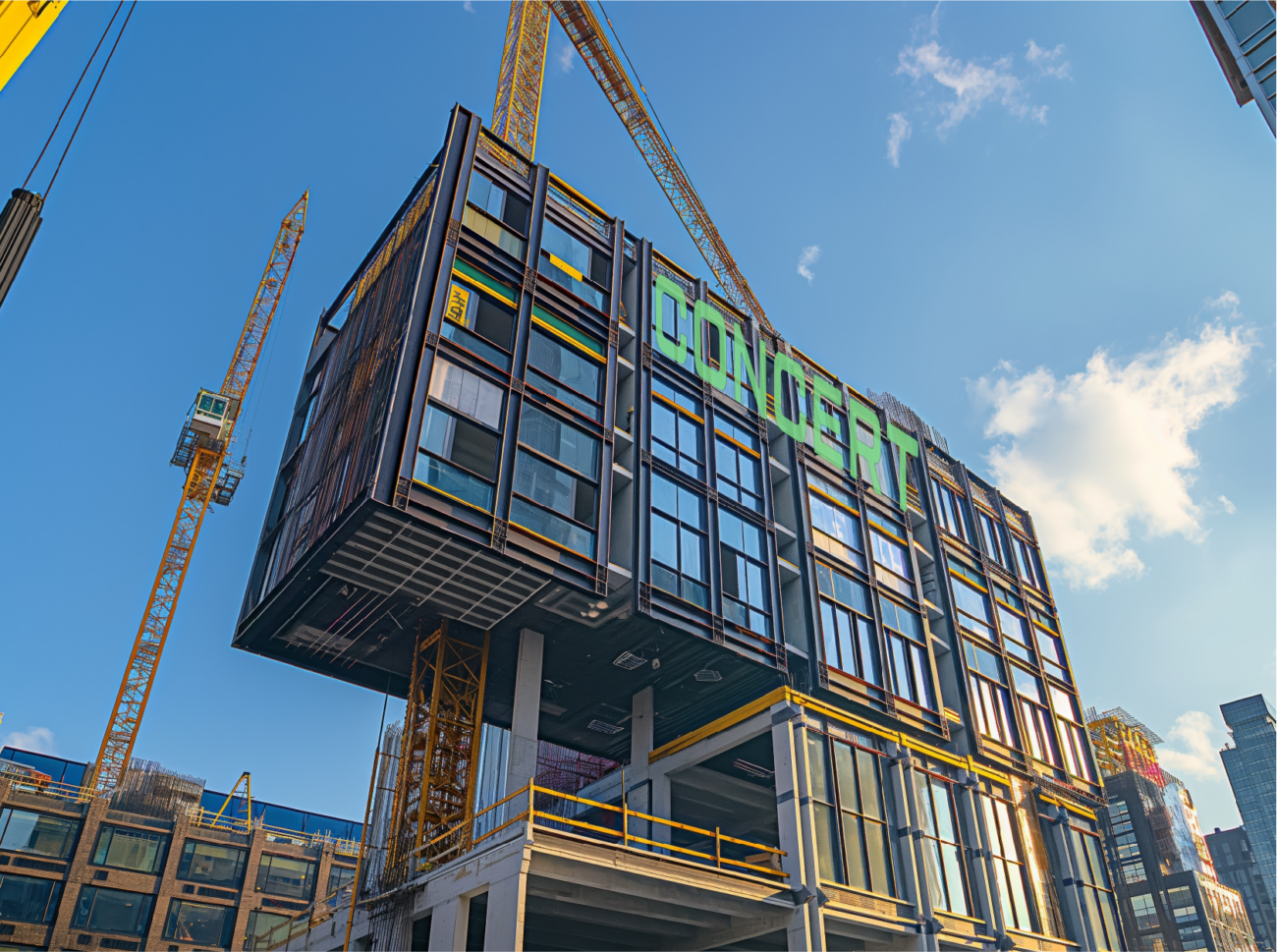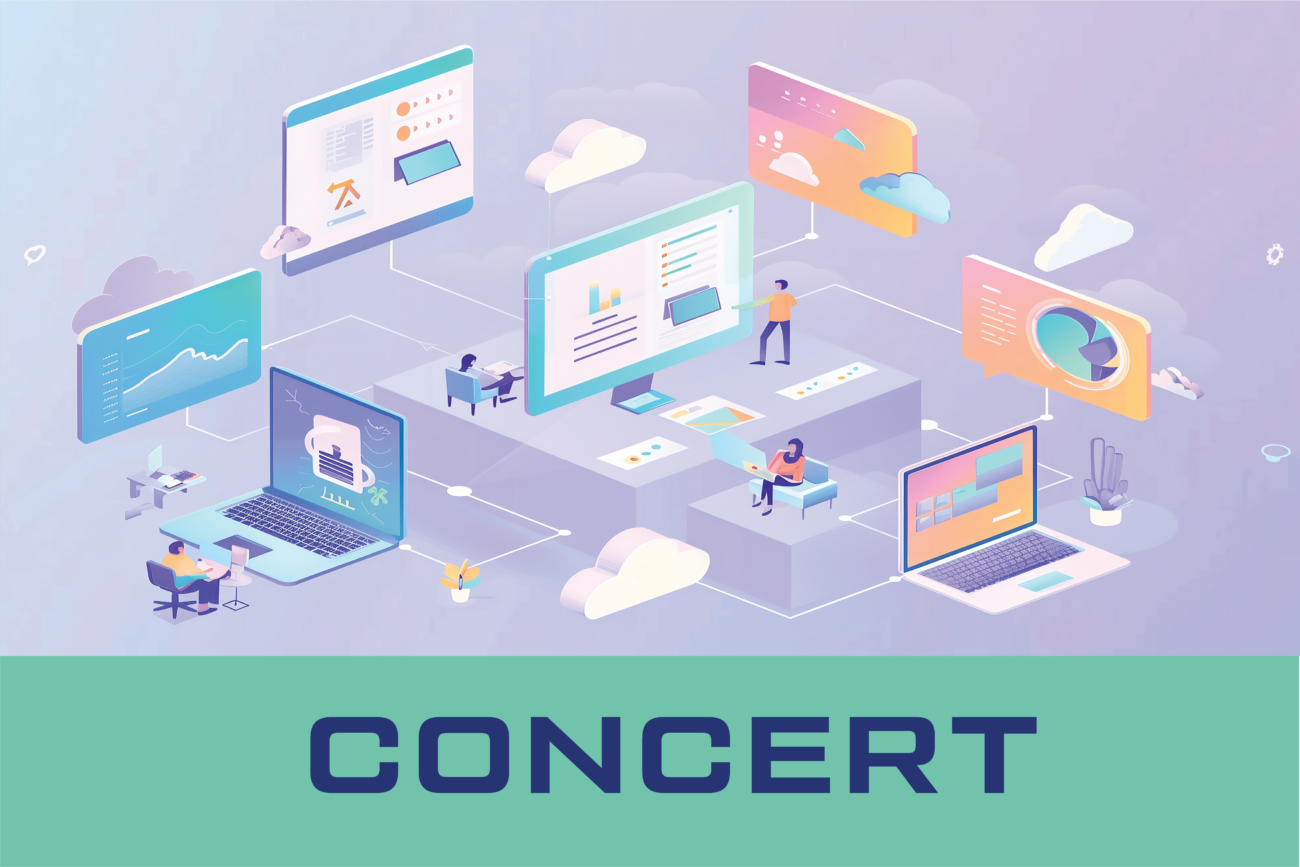by Concert VDC
Let’s face it, your data is everywhere and not under your control. In the past, files were created on software and computers that you owned. The data was saved to your network where it was dutifully backed up on tapes, and everything was in your control. Today, you subscribe to software that exists only within a web browser, and your files are stored across various clouds that never touch your network and are rarely, if ever, backed up to a location you manage. Your firm is a single point of failure away from losing all your work on a particular service. We are experiencing a new normal where files are increasing in volume and distributed with greater frequency to more and more project participants and their silos.
Additionally, the new AIA 2022 Digital Practice Documents add new requirements for data management and distribution. To accommodate this condition new and innovative means of managing project data are required.
The Common Data Environment
For years data and process experts within AEC have talked about breaking down the silos of information by creating Common Data Environments (CDE). The success of a CDE is built on the premise of a shared collaborative environment, removing the friction (and silos) from data sharing among participants and is intended to capture the full data record of a project. The structure of the data can be simple or assume the protocols of a published standard such as ISO-19650, which imposes complex file naming and organization conventions.
CDEs are available today through big software vendors, with products like Autodesk’s Construction Cloud (ACC, also BIM360) and Oracle’s Aconex, for example. These cloud-hosted platforms are notable for providing a lot of value-added services, but they also come with risks for project participants:
- Their services are not free and require an expensive subscription;
- Their value proposition requires all project data to be stored in a single repository schema;
- They function optimally when all project participants are included and follow exacting data protocols. Less than full participation results in “shadow” use-cases and siloed data;
- They are maintained by a singular host who can grant or deny access to the data at their whim;
- They do not stay up forever. Eventually, access to the data and records will be shuttered by the host and the utility will be lost for the building project lifecycle
Ultimately, CDE’s are not perfect beasts and data frequently moves independently of these giant platforms and goes untracked and without context or accountability. This limits the ability of the CDE as a comprehensive solution to the problem of project data management.
The AIA 2022 Digital Practice Documents Bring New Parameters
With the release of the new AIA 2022 Digital Practice Documents, a new dimension to project data management was added – the ability to deliver data files as a legal contract document. Data accountability requires tools to not only manage the data but to also provide protections above and beyond what is necessary for paper document deliverables. Unlike paper, data delivery requires two new components:
- a means of authorizing the use of the data
- a right-of-reliance statement indicating what the permitted use is for the data
For this to function, a mechanism is now required to confer explicit authorization and reliance statements by the data owner. Conversely, there must also be a means for the recipient to authenticate the received data and understand the permitted use specified by the data owner.
New Technology for the New Normal
Meeting the combined goals of a CDE and the requirements of digital contract deliverables requires an innovative approach to data management. We have learned a few things so far:
- Project data tends to defy the desire for a singular data repository. Instead, by necessity, the places where data is created and stored are more distributed than ever
- Context matters more than storage location. The greatest value comes from knowledge of the intended use of the file and whom it was shared with
- Project data records need to survive perpetually and independently of any individual project stakeholder
- All shared data benefits from a means and method of being authenticated
What is required is a platform that focuses on recording the ownership, authorization, and distribution of the data versus focusing on mandating where the data is located. As we have learned, data will move independently of any tracking system or centralized platform.
The better approach is to register the original data on a record-keeping system not only designed to authenticate the data but also capable of warehousing a rich payload of metadata that fulfills the contextual requirements of CDEs, the AIA Digital Documents, and much more to service your project data management needs. Furthermore, this system ideally functions independently of any stakeholder, is accessible by all project participants, lasts forever, and is secure from any manipulation whatsoever.
Concert is Everywhere
Enter Concert.
At Concert, we recognize the mobility of data and built our platform as a means for AEC professionals to assert ownership and authority over their work no matter who has the files. Using Web3 technology, Concert customers can register their data and transactions to a blockchain that perpetually ties ownership of the data to its author and allows for a deep well of other data to be added including transaction records, digital signatures, approvals, process related status, and much more.
Project data managed with Concert offers greater utility and resilience than CDE platforms and incorporates the protocol requirements of the 2022 AIA Digital Documents. The core advantages are:
- Concert can authenticate data no matter where it is stored and provide the context needed for the user to understand ownership, versioning, permitted uses, and more
- Concert records are perpetually and immutably available to all project participants. No single entity can restrict access or make modifications. All data remains tied to the project for its full lifecycle
- Concert does not require annual maintenance or user fees. Records are established with a one-time fee per transaction
With Concert, the data itself is the key to unlocking its own records which, in turn, establishes a system of trust between all project participants.
We invite you to learn more about Concert and how we can not only meet your project data management needs but also open up new opportunities to realize the value of your data.
Visit us at www.getconcert.com and follow us on LinkedIn at @concertvdcinc.





